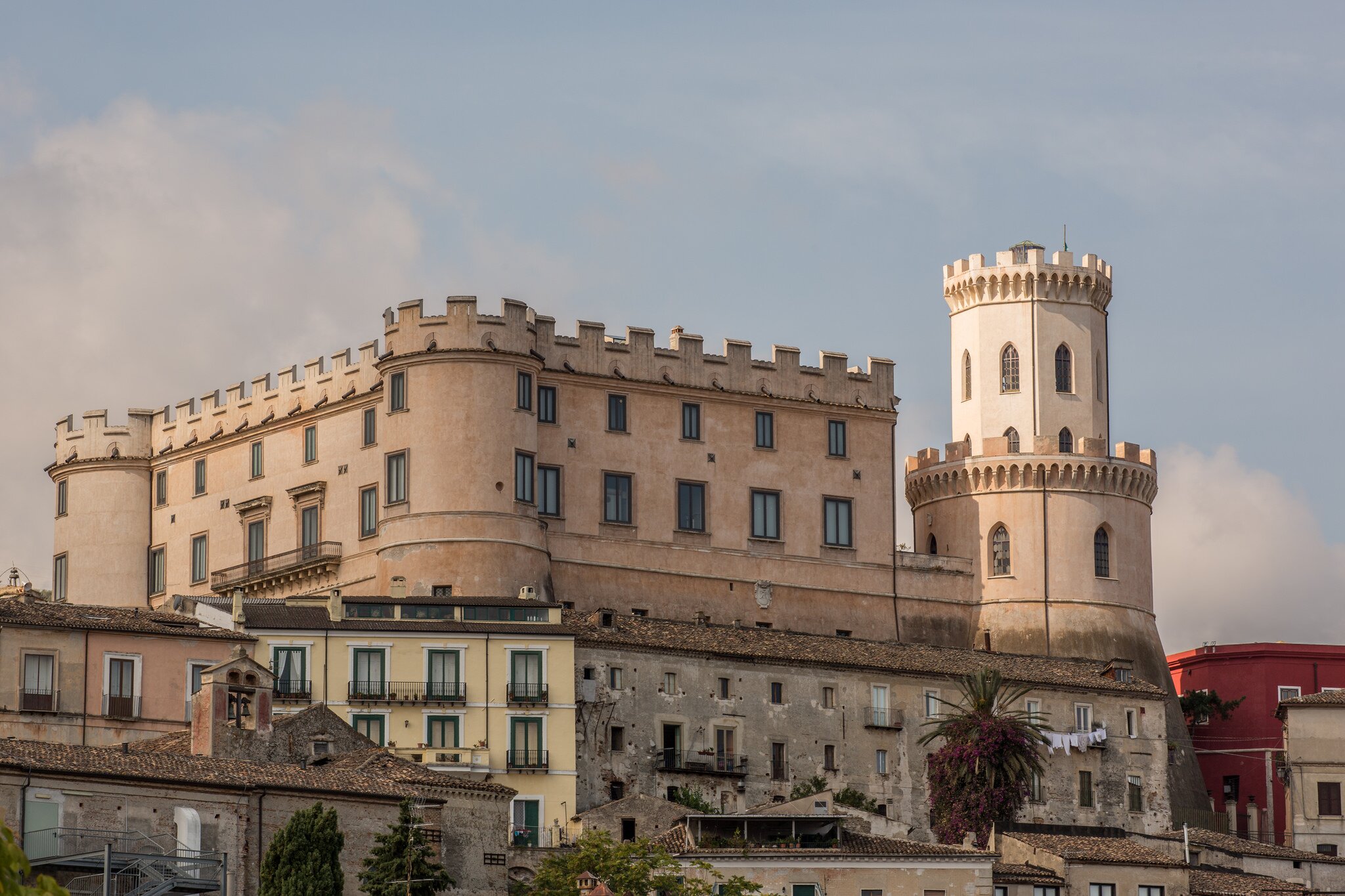


The first news relating to the presence, in Corigliano, of a fortified outpost date back to the 11th century. In fact, it was the Normans who, in their campaigns to conquer Calabria and Sicily, when moving along the valley of the Crati river, had to think of building a primitive stronghold, to defend the perched village of Corigliano and to control the underlying plain of Sibari. Although the radical renovation works (carried out starting from 1490) have almost completely erased the traces of this primitive fortified building, it can be considered that the base of the current Mastio dates back to this historical era. With the Aragonese domination of Calabria, which succeeds the Angevin one, Ferdinando I takes away from the Sanseverino family the fief of Corigliano and the adjoining fort. In 1489, following a visit by the Duke of Calabria who complains about the state of the fortress, he regrets that his garrisons cannot be hosted there, Ferdinand I of Aragon orders that expansion and restoration work be carried out, which resolve in an authentic reconstruction of the existing fortified building. The works started in 1490.

Within the framework of the fortified system defending the settlement, the construction of the Castle completed (with its role as a pole of formal and functional articulation), the defensive system, consisting of the fourteenth-century perimeter of the walls and the garrisons located in the crucial points of the settlement itself. In this circumstance, the old Norman keep was incorporated into a structure defined by a quadrangular layout, in the corners of which three new towers were placed, oriented according to the cardinal points. With these reconstruction works, sponsored by the Aragonese central authority, the Castle of Corigliano assumes its definitive configuration. The construction system obeys the needs of new war techniques, which require the fortification to be able to absorb the blows of the artillery. The author of these works is uncertain, but various elements suggest their attribution to Antonio Marchesi da Settignano, a pupil of Francesco di Giorgio Martini. The typological layout of the Castle of Corigliano is in fact linked to other castles built in those same years in the Kingdom of Naples; and those castles have their main formal and technological reference in the renovation works carried out in Naples on the old Angevin castle.

In 1506 the fief of Corigliano and the castle re-entered the Sanseverino family. But his condition must be very precarious if the same gentleman decides to have a new fortified palace built in S. Mauro. In 1516, Antonio Sanseverino re-established his residence in the Castle and, to increase its security level, he promoted other renovations. The construction of the shoes around the base of the corner towers and the construction of the Rivellino, placed to protect the only entrance, connected to the Castle by two slender drawbridges that guaranteed access to the fort, are probably attributable to this period. As a testament to its new state of efficiency, in 1551 the Castle was destined to host a military garrison. In 1616 the fief of Corigliano passed into the hands of the Saluzzo family of Genoa. In order to make the Castle more suitable for their own residence, the new owners carried out the first functional adjustments on the fortified structure in 1650. Among these, the buildings of the octagonal tower (placed on the base of the ancient Mastio), of the chapel of S. Agostino (which will undergo repeated renovations), of the new access ramps to the internal courtyard, as well as some rooms intended for the residence, are worth mentioning. In 1720, following the decision to reside permanently in their new palace, the Saluzzo family promoted new renovations of the Castle. The need to live in the manor during the summer and autumn periods pushed Agostino Saluzzo to adapt some internal rooms of the fort. In the specific case, some rooms were remodeled and made more comfortable, a balustrade was built outside the throne room and a large stable was built on the current via Pometti, belonging to the Castle, which replaced the existing one in the moat. In 1806 the Castle underwent the siege and pillage by French troops. Following these events, the Saluzzo family moved to Naples and decided to alienate the Castle and their other assets from Corigliano in favor of Giuseppe Compagna di Longobucco. Luigi Compagna, Giuseppe's second son, in 1870 made further changes to the internal rooms of the manor: the internal corridor was built, which reduced the space of Piazza d'Armi; the chapel of S. Agostino was renewed; the upper floor of the Rivellino was demolished to obtain rooms for the administration of the family; some rooms were richly decorated. With the transfer of the last members of the Compagna family to Naples, the historical cycle of the Castle of Corigliano ends.
Ducale Castle
Address: Via Francesco Compagna 1, 87064
Phone: 0983 81635
Site:
http://www.castellodicoriglianocalabro.itLocation inserted by
Culturalword Abco